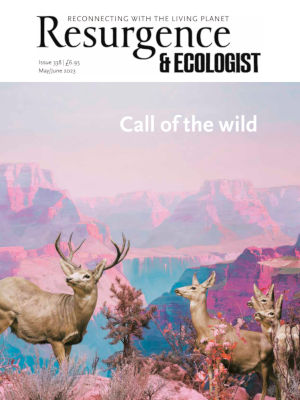A little less than 100 years ago, with the advent of industrial agriculture, we began treating animals like plants. Plants stay rooted, absorbing their resources from where they stand, but animals should move. As we perpetuated this weird state of affairs, incarcerating livestock by the tens of thousands in concentrated animal feeding operations (CAFOs), the problems multiplied. Rainforests were cleared for soya. Lagoons of manure polluted water sources. Antibiotics stopped working. The industry pumped out more emissions than all the world’s transport combined. These are animals who walk just once in their lives, on their way to the abattoir.
So far, so familiar. It is devastating statistics such as these that led to environmentalist George Monbiot’s book Regenesis: Feeding the World Without Devouring the Planet, which calls for an end to the farming of all livestock, and to Pat Brown, CEO of Impossible Foods, describing the farming of animals as “the most destructive technology on Earth”. But, says Ilse Köhler-Rollefson, animals are not a technology, and for 9,000 or so years before the advent of industrial agriculture we were in a different relationship with them. To tar every animal with the same brush and to envision a future where meat is only grown in vats is only to separate us further from the natural world.
In 1991, Köhler-Rollefson took up a fellowship to research camel management in Rajasthan, India. She was a vet by training, but it was her move to India and her initiation into the culture of the Raika herders that began her lifelong passion for the world’s pastoralists. From Sámi reindeer herders to Buddhists tending yaks on the Tibetan plateau, from Sicilian donkeys to sheep walking the old drove roads of Spain, from the water buffaloes of the Kutch desert to the horses of the Mongolian steppe, humans’ work with animals is as ancient as it is global. Worldwide there are 300 million pastoralists, and in many parts of Africa and Asia they remain a significant part of the economy. Demanding their removal is to raise far more questions than it answers.
Wild ruminants once had the freedom to follow the rains and grasses across large swathes of the planet, going seasonally where the feed was best, “surfing the green wave”. Transhumance replicates this, driving animals up into the mountains after the spring melt and returning them to the valleys for the winter, converting plants from land that is otherwise unfarmable to milk and meat. While US livestock raised in feedlots consume twice as much protein as they produce, Ethiopian and Kenyan livestock, raised by pastoralists, produce twenty times more than they are fed.
But this relationship goes both ways, because unlike in the CAFOs, these animals are not treated as units of production. Köhler-Rollefson describes how nomadic herders in India move their flocks onto fields after the harvests and are paid by the farmers for the privilege, because the quality of their manure is so much higher than that of chemical fertilisers. She writes too about how intelligent, responsible grazing can enhance biodiversity, sequester carbon and produce healthier meat. And she writes about how animals bring to these herding cultures an economy, a dignity and a way of life that would otherwise be lost. She makes a persuasive case that in these times of crisis, pastoralists and the animals they herd have much to give.
Hoofprints on the Land: How Traditional Herding and Grazing Can Restore the Soil and Bring Animal Agriculture Back in Balance with the Earth by Ilse Köhler-Rollefson. Chelsea Green, 2023. ISBN: 9781645021520.







